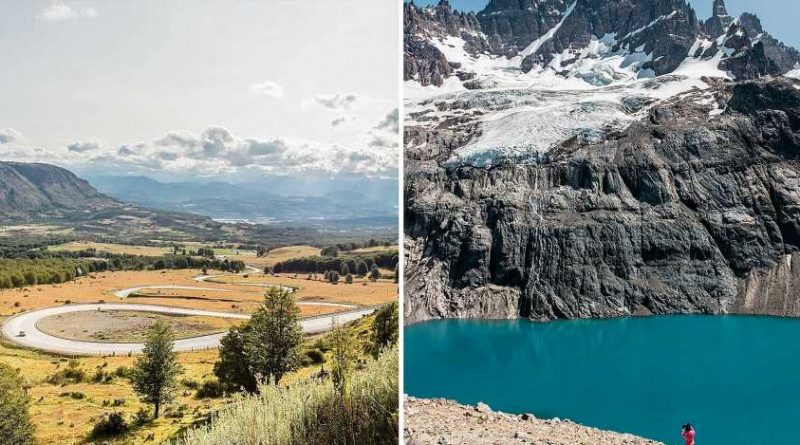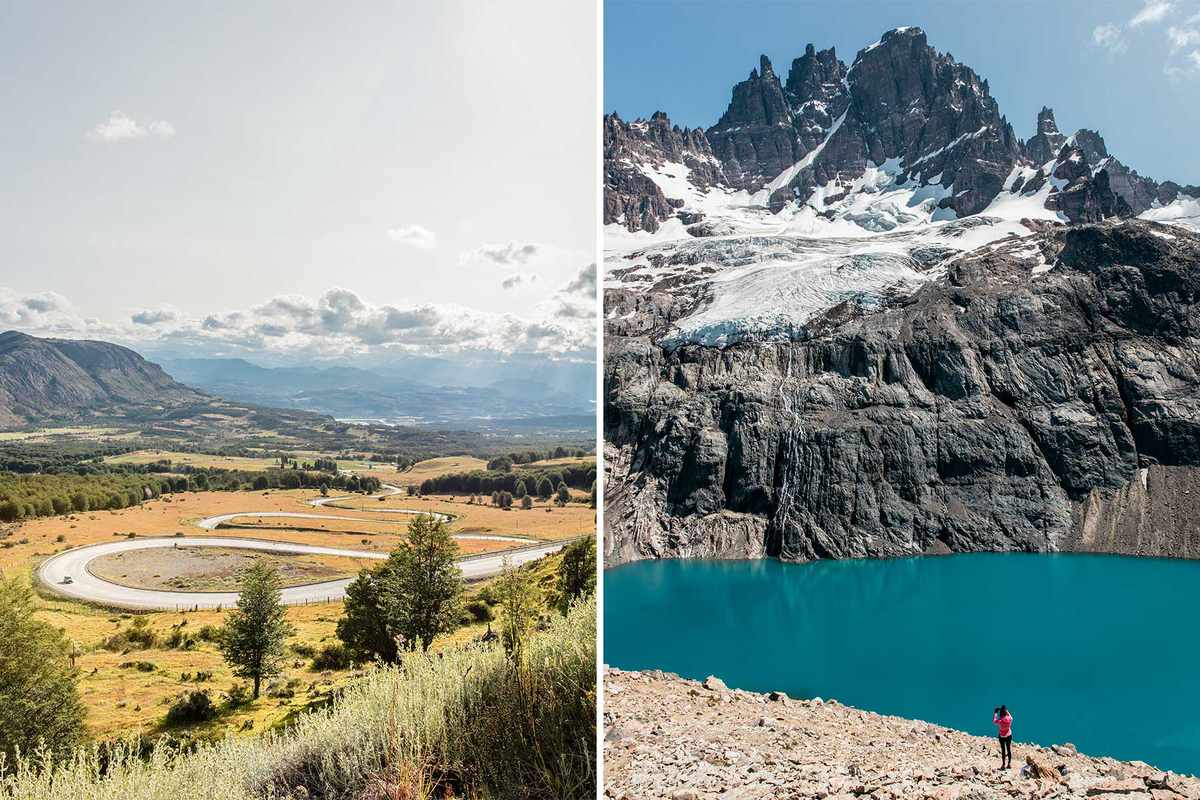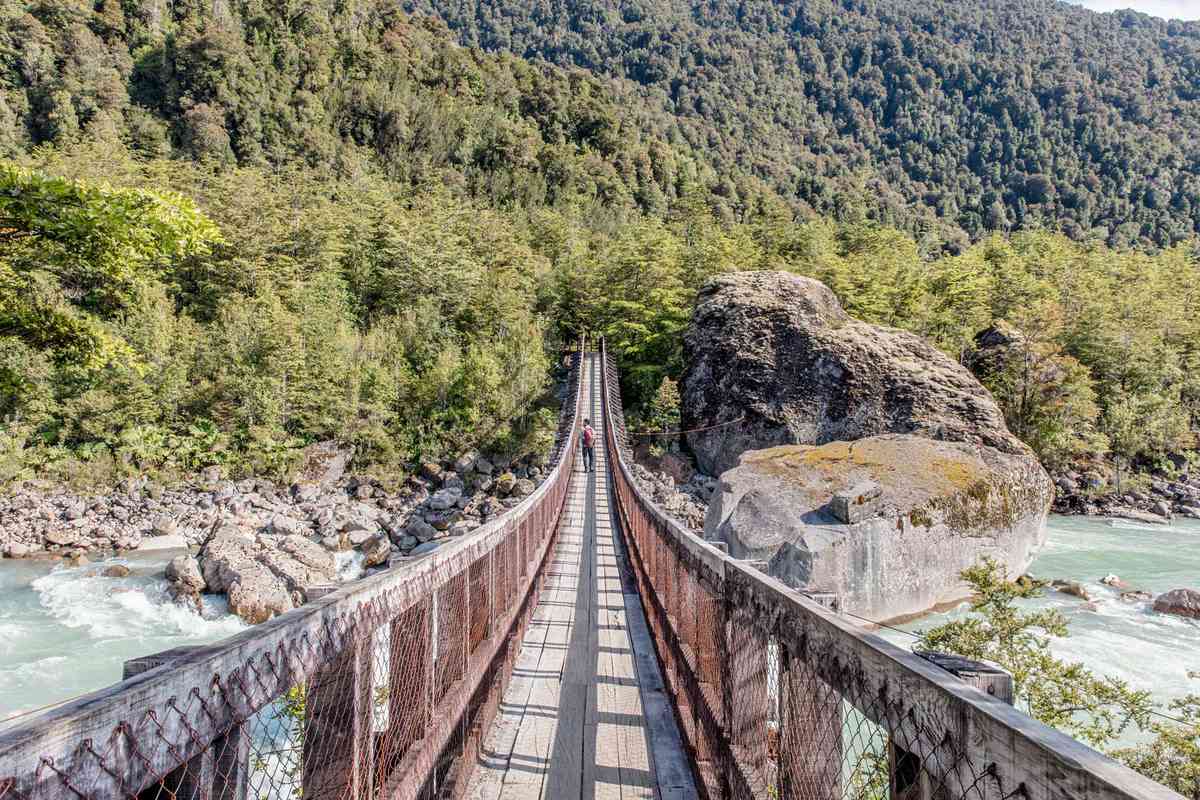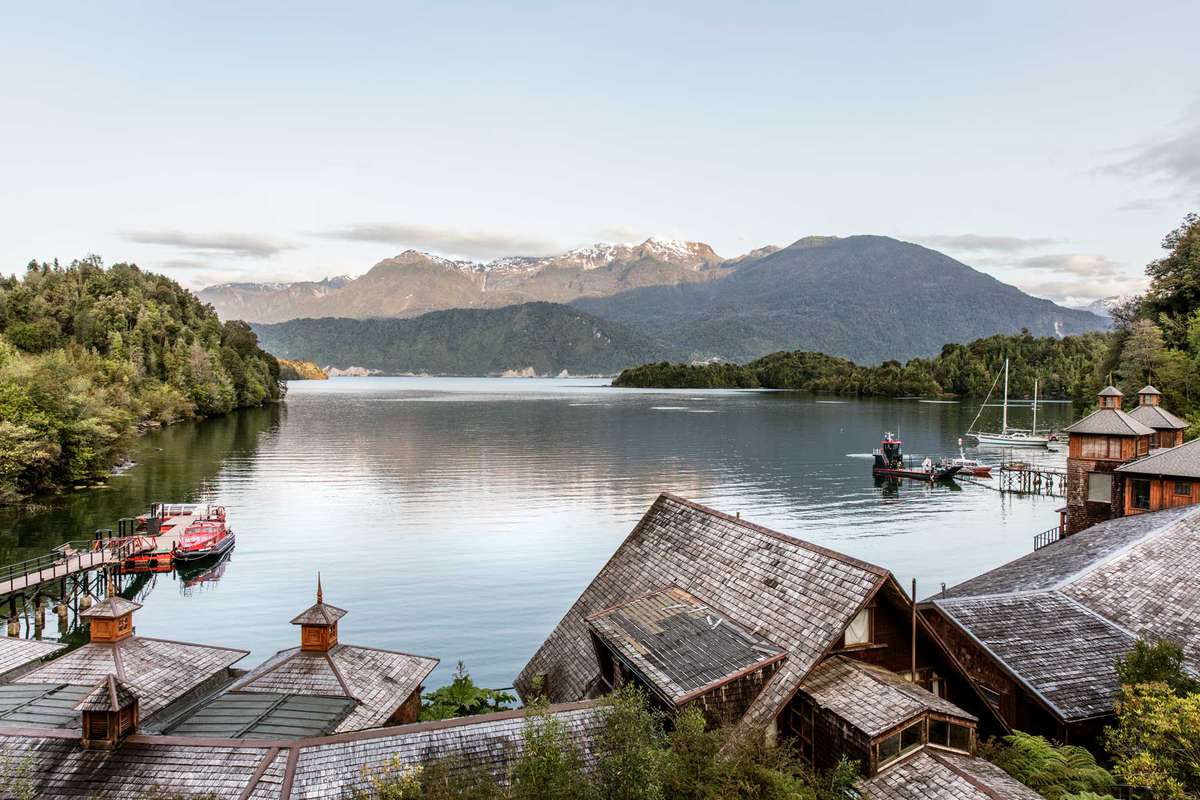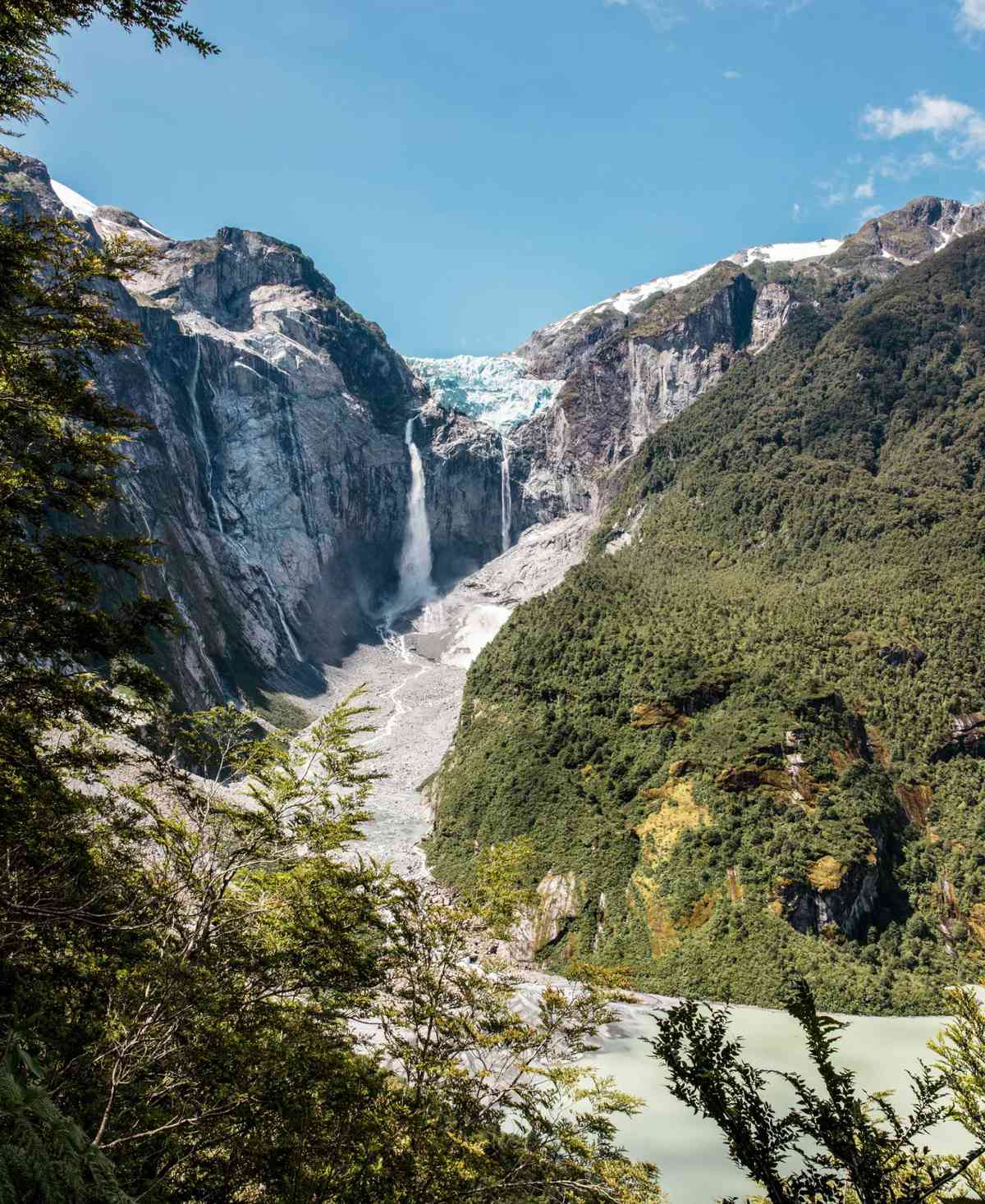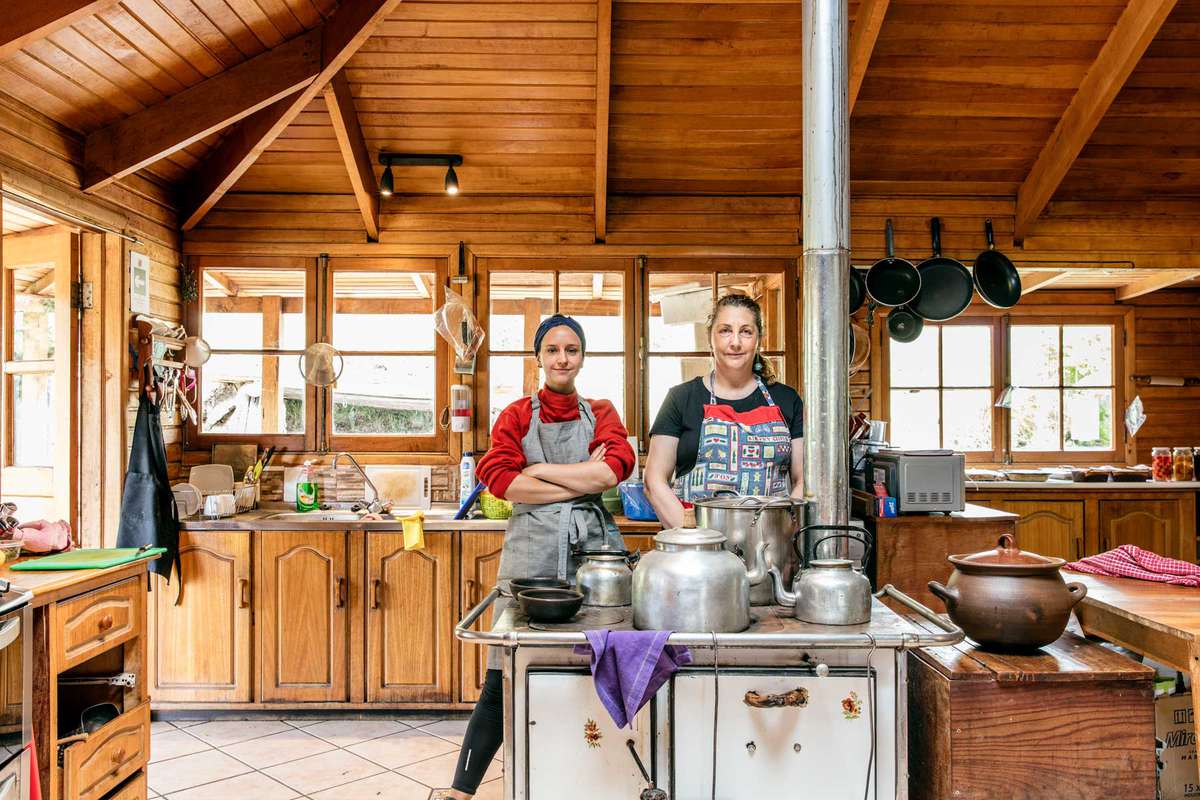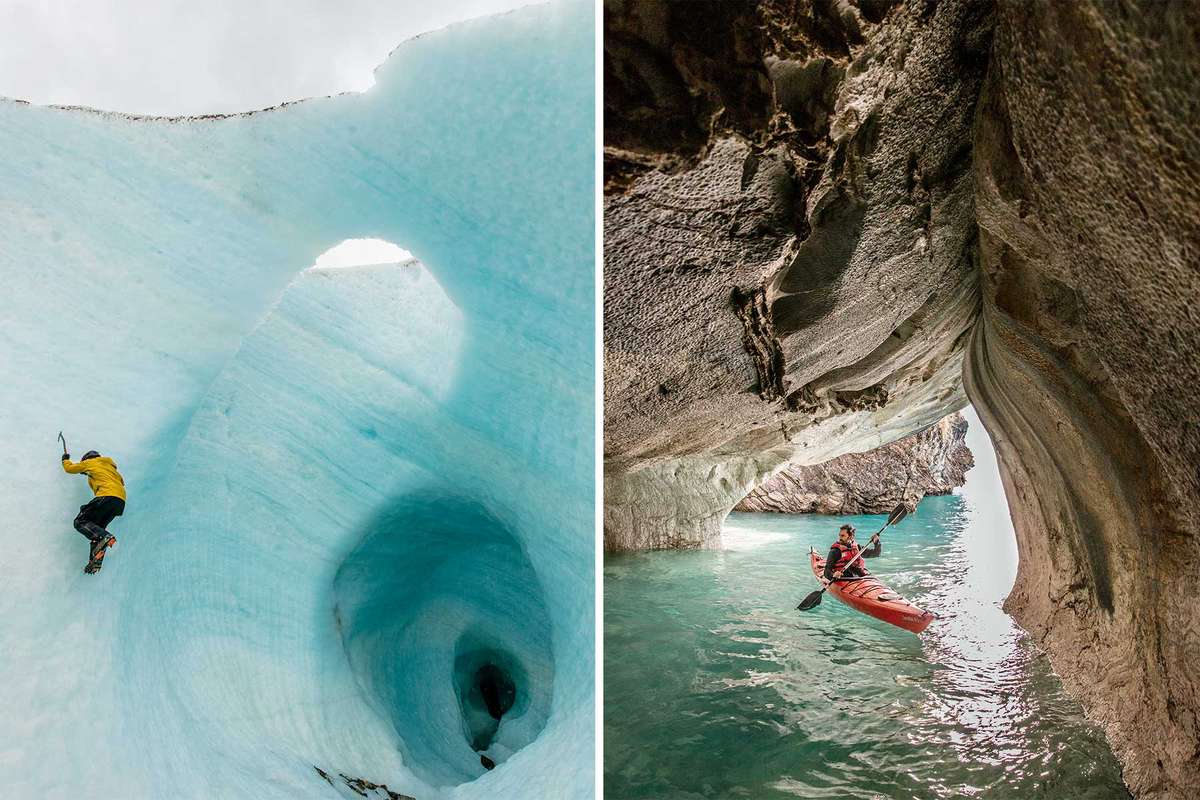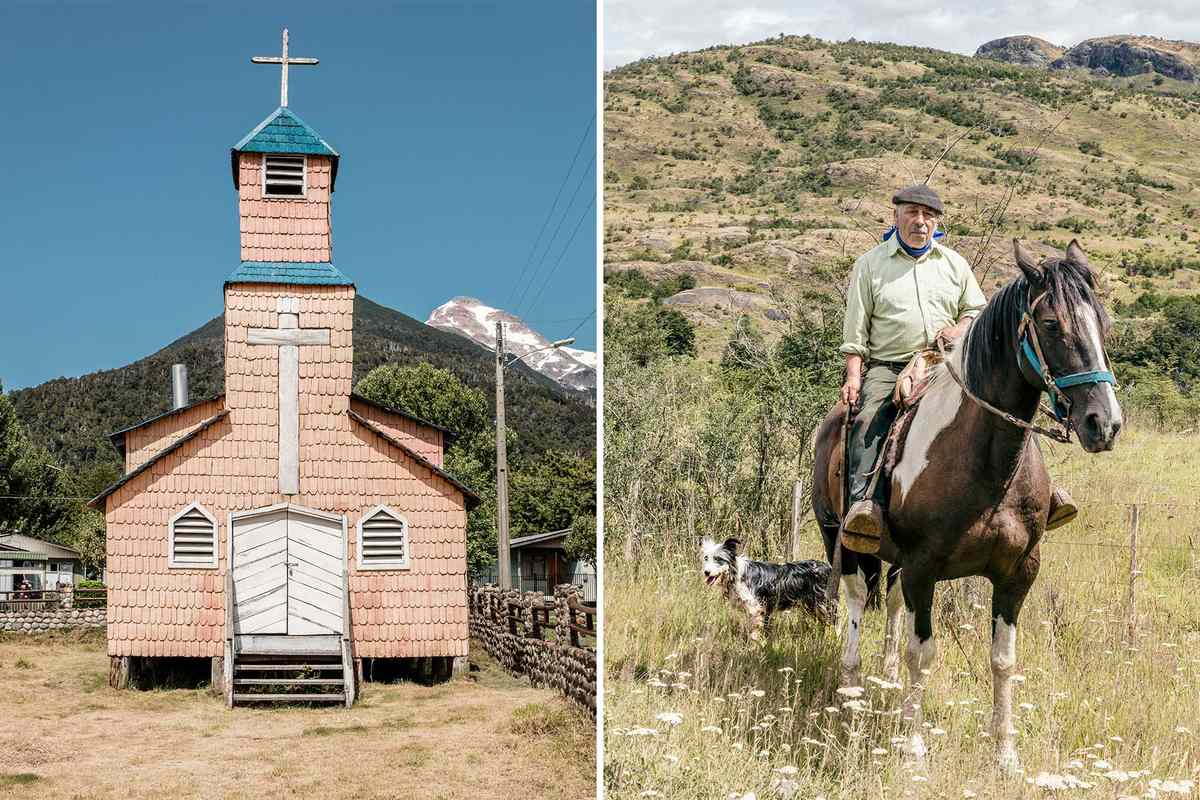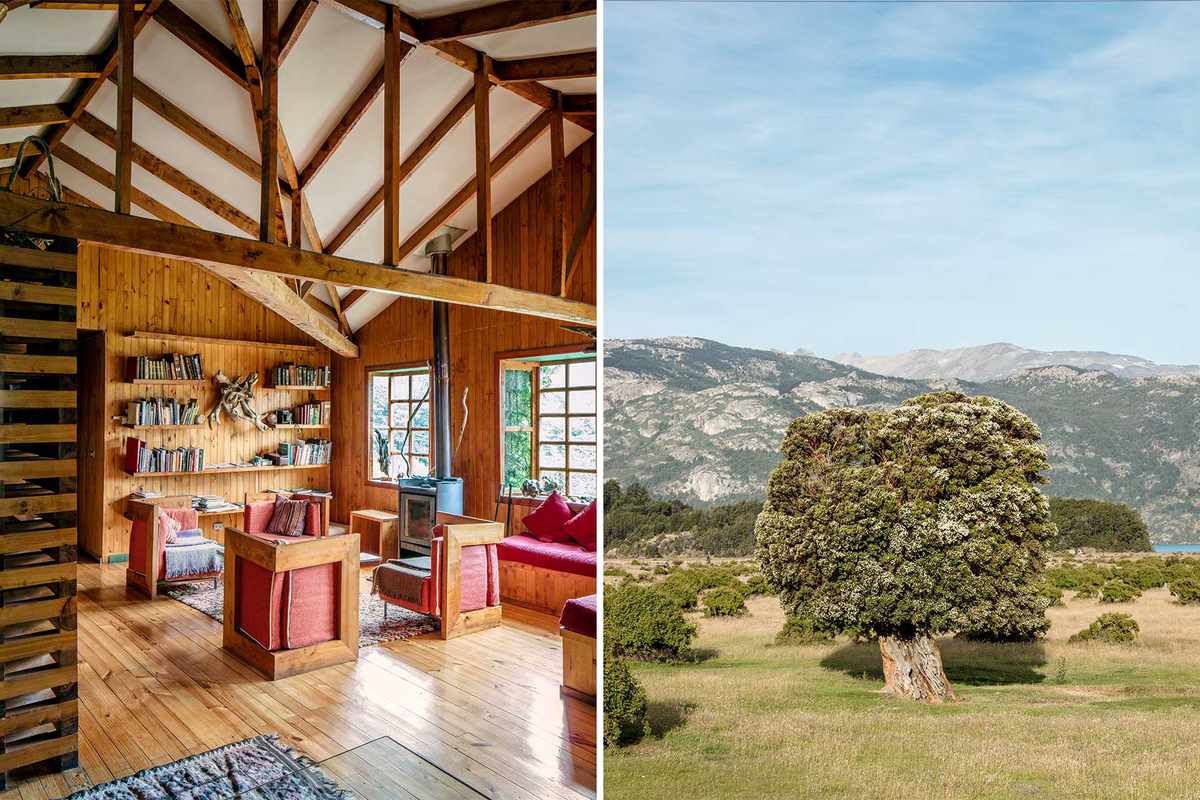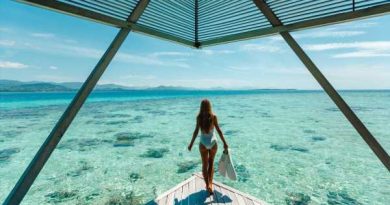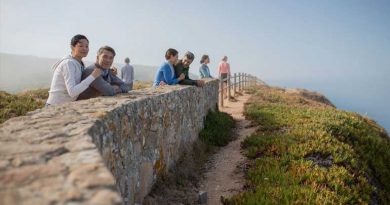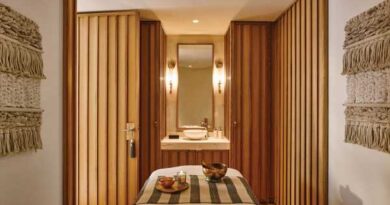Chile's Aysén Region Is a Dreamscape of Towering Mountains, Crystalline Lakes, and Sublime Glaciers
There were six of them: two adults and four kids, cycling up an unpaved mountain road on three tandem bicycles. As my girlfriend, Charlie, and I careered past, we looked at the family and wondered momentarily whether our choice of transport was the wimp's way to get around. In our sturdy, air-conditioned 4 x 4 we felt insulated from the rigors of the road, from the extreme geography and the sun reflecting off the glaciers above us. But the higher we climbed, the more confident we became about our decision. The gravel became big boulders, and as we navigated the switchbacks, gunning the engine up the steep slopes and bouncing over the rocks, we knew that this was going to be an adventure, whether we were on two wheels or four.
It was the first morning of a two-week road trip along the Carretera Austral, the highway that threads its way for almost 800 miles through southern Chile. Running between the towns of Puerto Montt and Villa O'Higgins, the Carretera takes you through Aysén, a little-visited region of Patagonia sandwiched between two popular ones: the Lake District above and Torres del Paine National Park below. When the poet Pablo Neruda wrote that "at the end of Chile the planet breaks," he must have had in mind the fractured landscapes of Aysén: more than 41,000 square miles of mountains, lakes, glaciers, fjords, and archipelagoes.
Until the 1970s, there was no road that led here. The only way in or out was by boat, navigating inland from the Pacific through a tangle of rivers. That began to change when General Augusto Pinochet decided to build the Carretera, out of fear that neighboring Argentina would lay claim to a region so isolated that it was only loosely incorporated into Chile. The highway was completed in 2003 and remains the only route through the region; most of it is still unpaved. All this helps to explain why today Aysén is the least populated part of Chile. There are only 2.5 people per square mile—about the same population density as Mongolia.
It also explains why relatively few people come here. But recently, the things that make life so difficult in Aysén—the geography, the impossibility of finding a phone signal—have started attracting visitors. Chileans with disposable cash are building summer houses, and international travelers are coming, too. This is thanks in large part to Douglas Tompkins, the American founder of the North Face, and his wife, Kristine, former CEO of Patagonia. Before Douglas's death in 2015, they purchased more than 7 million acres of wilderness in Aysén, then donated it to Chile to create a series of national parks. Most visitors have tended to be determined adventurers like the cyclists we saw on the road, juddering up and down the mountains with tents on their backs. But, as we discovered, Aysén also caters to those of us who prefer the comforts of handsomely appointed hotels.
One morning in March, Charlie and I flew from Santiago to the village of Balmaceda, which has a small airport in the middle of a dusty grass steppe studded with squat, wind-harassed trees. After picking up our car, we headed north. Around Coyhaique, the regional capital, the road is smooth blacktop and the driving easy.
As we crested a mountain pass, the land became lush and exuberant: banks of fuchsia, whose elaborately flared flowers looked like tiny pink dresses clinging to the branches; giant leaves of nalca, also known as Chilean rhubarb, shading the roadsides like umbrellas. Aysén has many microclimates, and we had crossed into the temperate rain forest of Queulat National Park.
As beautiful as the park was, we couldn't stop to admire it. A boat was waiting at a pier on the Puyuhuapi fjord to take us to Puyuhuapi Lodge & Spa, a hotel on the far shore that is accessible only by water. The property is owned by Christine Kossmann Perl, whose father fled communist East Germany in 1962 and came to Chile, where he started a shipbuilding business in Valdivia, just north of the Lake District. Every summer the family would sail their yacht down to Aysén. They came to Puyuhuapi for the first time in 1986, to visit a pocket of natural hot springs warmed by a trio of small volcanoes. The Kossmanns loved it so much that they eventually bought the land on which the springs sit and built a set of cabins. Over the past 30 years, the cabins have evolved into an elaborate complex of wooden chalets arranged around a bay, and it's one of the best hotels in southern Chile.
The lodge has the feeling of a grown-up summer camp—complete with a blackboard that lists the day's activities. The family yacht still sits at anchor out front. There's a natural aesthetic about the place, from the elegant arrangements of moss, stone, and fern to the waist-high wooden penguin sculptures dotted around the sofas in the lounge. Charlie and I had been on the road for four bone-shaking hours, and our bodies needed soothing. So we headed to the hot springs a short walk up a forest path. As we sat in one of the steaming pools, Charlie scanned the fjord for the dolphins that live here. Sadly, she didn't spot any, but we later heard that they had been seen that day in front of the hotel.
The following morning we got up early and headed into the park. Aside from the isolation, its biggest draw is the Hanging Glacier, which droops precipitously from a mountaintop nearly 2,000 feet high. After crossing a wooden footbridge strung over the Ventisquero River, we followed a path through the forest. The vegetation grew in an extraordinary profusion of tufts and fronds, and something in the jungle was emitting a sharp minty scent. "It's just like Vicks VapoRub!" Charlie shouted back at me. Apart from the squelching mud under our feet, the only sound was the call of the chucao tapaculo, a red-breasted bird like a steroidal robin, several of which could be seen hopping about in the undergrowth.
Eventually we faced the glacier, a strangely wintry sight against a backdrop of almost tropical fecundity. Meltwater tumbled down the cliff face and fed a lagoon the mineral-green color of surgical scrubs. We heard the occasional crack and boom, like a violent storm, followed by the sight of a car-size piece of glacier breaking off and falling down the cliff. It was our first close encounter with the ice that had shaped this remarkable landscape.
We explored Aysén's geological history when we swung back south to Coyhaique, where we visited the new Museo Regional de Aysén. This museum occupies a beautiful clapboard building with a zigzag roof modeled on a traditional rural warehouse. Andrea Muller, a friend of mine who lives in Santiago, runs the exhibition program for Chile's network of national museums, of which the Museo Regional de Aysén is a part. As Aysén has become better known over the past few years, she explained, the locals, who have until now lived on the margins, wanted their story told.
The exhibition begins with an installation about the ice cap that covered this area in the last ice age and sculpted the landscape. It then displays the paraphernalia of frontier life—boats, boots, knives, radios, and a reconstructed puesto, or hut. In 1937 the state decided to colonize Aysén. The government offered free land to anyone who would cultivate it. This seemed like a good deal, and people came not only from Chile but also Germany, Belgium, Britain, and even the Middle East (today, in the little town of Chile Chico, you can eat wonderful hummus and baba ghanoush). But in order to cultivate the land, the settlers had to burn the trees that covered it. The fires they lit destroyed more than 7 million acres of native forest. As we looked out of the museum windows, we saw the result: vast empty plains.
They were not, of course, the first people to live in the area. Two hours south of Coyhaique, in the shadow of Cerro Castillo, a soaring mountain with a jagged edge like some peculiarly cruel instrument of war, we walked to a low overhang at the foot of a cliff. Here the rock is covered with the prints of human hands, belonging to both children and adults, in green and orange pigment. Charlie and I were the only people there that morning, and we couldn't resist measuring our own hands against one of these ancient imprints, careful not to touch the marking, made perhaps by another young couple passing this way millennia ago. Later I called Francisco Mena, an archaeologist in Coyhaique whose grandfather founded Santiago's superb museum of pre-Columbian art. The markings, he said, were as much as 6,000 years old. Not much is known about the people who left them, why they did so, or why they eventually disappeared from the area. Mena said that, in the hands highest on the cliff face, he sees the signs of youthful competition. Perhaps this was a place to play.
No visitor to Aysén can avoid Lake General Carrera. At more than 700 square miles, it blocks the journey south, forcing you on a detour around its shores. This is a beautiful inconvenience: the lake's glacial water is the unbelievable blue of a child's crayon drawing, and the scene is ringed by towering mountains. The night before we got to the lake, the first snow of the season had fallen on their summits.
We were staying at Mallín Colorado Ecolodge, which sits on a hillside high above the water. It is run by Paula Christensen, whose family, like the Kossmanns in Puyuhuapi, vacationed here when she was growing up in Santiago and eventually decided to build a hotel in the area. Today there are several cabins with floor-to-ceiling picture windows overlooking the lake, and a stylish new lodge with six rooms and a long veranda. The rooms are decorated with woven wall hangings by Christensen's sister and wooden furniture made by her brother.
One afternoon Charlie and I drove to Puerto Río Tranquilo, a town on the shore of General Carrera, and joined a kayaking trip organized by one of several adventure companies that operate from huts along the water. In a tandem kayak—Charlie up front and me in the back—we headed toward the area's most extraordinary natural phenomenon: a cluster of small marble islands left behind after giant glaciers carved the lake out during the last ice age. Over the millennia, rain and waves have hollowed out chambers and tunnels, so that these islands resemble Gothic constructions. We circled the caves before heading inside. Drifting through these apertures, with their vaulted ceilings and sinuous pillars, we realized why they are nicknamed the chapel and the cathedral. According to our guide, Emilio Poblete, the chapel has been officially consecrated by the Catholic church.
The next day we came face to face with the last remnants of the ancient ice cap. A 50-minute drive from Puerto Río Tranquilo is the Exploradores Glacier, which lies on the fringe of one of two ice fields in Aysén that have persisted since the ice age. Led by Poblete, we trekked through the forest to the moraine left at the head of the glacier—a chaos of rocks, some the size of fists, others the size of houses, that have been chewed up and spat out by the glacier's progress across the landscape.
Gradually the rocks became finer and the ice whiter, until we strapped on crampons and hiked right onto the glacier, its surface undulating like a frozen sea. As we walked, we passed pools of electric blue and crevasses that plunge more than 300 feet to the bottom of the glacier. We squeezed ourselves into tunnels and hollows formed by years of flowing meltwater and put our ears to the surface to listen for the "devil's whip," the loud crack that results whenever a piece of it breaks. Peering into the ice, we could see tiny bubbles of prehistoric air trapped inside.
By now we were approaching the southern reaches of Aysén, where the road tracks the course of the Baker River. The mountains here are dry and scrubby, the river a ribbon of shocking cobalt running through them. This is gaucho country, and as we drove, we sped past men on horseback, their traditional berets shading their tanned, leathery faces. We saw the occasional cow or horse snacking on rose hips from roadside bushes.
Eventually the land became flatter, greener, softer. The river, now a deep emerald, had slowed to a broad meander, and everything around us felt languid and sleepy. We were on our way to Tortel, a village on the Baker River delta. The road got here only in 2003—before that you had to take a boat.
Tortel's relationship to the water has created a unique way of life. The first settlers to inhabit the delta tried to farm cattle, but the sodden ground couldn't support the animals. Instead they cultivated cypress trees, transforming their wood into pylons and fence posts, which would be collected by a naval boat and taken to Punta Arenas, on Chile's southern tip, to be sold. The village developed around this informal port, and the villagers, whose houses were widely spread out, constructed wooden pathways to reach one another without having to row across the bay. Today the village is an elaborate cat's cradle of boardwalks on stilts that run up and down its slopes.
At the top of a steep flight of mossy steps is the Entre Hielos Lodge, a chic little place run by María Paz Hargreaves. She was an architecture student in Santiago when she first came to Tortel as a tourist, and had never seen anything like it. Before she graduated, she wrote a thesis on the village's unique system of boardwalks and then, drawn by the romance of this out-of-the-way spot, she came to live here. "I felt this was my place," she told me.
In 2008 she bought a building high on a hill, up in the tree canopy, then gutted it and remodeled it into a boutique hotel. The interior takes its inspiration from Tortel's logging culture: the long communal dining table is like a stretch of boardwalk, and the whole place has the feel of a tree house, only with Eames rocking chairs in every room.
One day we took a boat trip with a taciturn man named Rubén Flores, whose wife, Valeria Landeros, owns a hostel in the village and makes delicious calzones rotos, a kind of Chilean doughnut. We puttered up a green channel lined with overhanging trees, skirting islands of marsh grass where wading birds nosed around for snacks. We were headed for La Isla de los Muertos—the island of the dead. Several decades ago, a group of graves marked by lichen-covered wooden crosses was discovered on this forested dot of land. Their origins were mysterious, so the mayor of Tortel called in Mena, the archaeologist, to excavate the site. Mena found 33 wooden coffins and began to investigate who was buried in them. The cemetery, it turned out, dated back to 1906, before Aysén had been permanently settled. The graves belonged to a group of loggers who were brought here from the island of Chiloé to harvest wood. Their only connection to the outside world was a boat that would visit twice a year with food. It's likely that during one passage to Tortel, the boat sank. It is likely the workers starved to death.
From those difficult beginnings, Tortel has grown into a place that seems to have been taken from the pages of a fairy tale. Early the next morning, Charlie and I took a walk around the bay. Mist was hanging over the water and woodsmoke was drifting from the chimneys. A dog trotted alongside us, patrolling the boardwalks, and a couple of early risers unloaded bundles of wood from boats roped to the jetties.
We stopped and leaned against the railing and looked at the village crawling up the hills. The arrival of the Carretera Austral may yet change Tortel, but that morning, as the sun began to burn through the haze, it was still, silent, and timeless.
How to Explore Chile’s Aysén Region
Getting There
A number of carriers offer nonstop flights from the U.S. to Santiago. There are connections available from Santiago to Balmaceda, Aysén's regional airport, with latam, Sky, and Jetsmart. We rented a 4 x 4 at the airport—essential for tackling Aysén's roads. Cell-phone reception is almost nonexistent along the Carretera Austral, so download a map app, like Maps.me, that works offline.
Coyhaique
The regional capital is a 45-minute drive from the airport, and every visitor to Aysén will pass through it. It is worth stopping at the Museo Regional de Aysén, which tells you all you need to know about the region's fascinating history and ecology. The best hotels in town are the Nomades Boutique Hotel (doubles from $125) and El Reloj (doubles from $105), which are infused with gaucho charm. In the center of town, Mamma Gaucha (entrées $7–$11) serves excellent Italian food.
Queulat National Park
As well as hikes to the Hanging Glacier, there are kayaks for rent on the lagoon, and you can take boat trips to get close to the glacier. Don't miss the Puyuhuapi Lodge & Spa (doubles from $280), a secluded hot-springs resort on the far shore of the Puyuhuapi fjord.
Cerro Castillo
The rugged landscape around the mountain, an easy 90-minute drive south of Coyhaique,
is arguably the most dramatic in the region. Refugio Cerro Castillo (doubles from $90) offers simple, comfortable accommodation, and the staff can help organize hikes and horseback rides into the mountains. Near the old school in Villa Castillo you will find handprints thought to be as much as 6,000 years old.
Lake General Carrera
The Carretera Austral follows the shores of the vivid blue Lake General Carrera, so as you drive south, you will have plenty of time to take in the scenery. Mallín Colorado Ecolodge (doubles from $155) has beautiful wooden cabins on a hillside overlooking the lake and its own secluded stretch of shoreline for anyone brave enough to take a dip in the glacial water. The Hacienda Tres Lagos (doubles from $210) has rooms on Lago Negro and a private pebble beach with a sauna and hot tub. You can book excursions on and around Lake General Carerra with one of several activity companies in Puerto Río Tranquilo. We went kayaking to the Marble Caves and hiking on the Exploradores Glacier with 99% Adventure.
Tortel
This enchanting village, constructed from wooden boardwalks winding their way around the bay at the mouth of the Baker River, was our southernmost stop along the Carretera Austral. It is a long climb up moss-covered steps to the Entre Hielos Lodge (doubles from $138), but it's worth it for its stylish tranquility. Dinner is served at a communal table, and the owner, Maria Paz Hargreaves, will organize a boat to take you to La Isla de los Muertos, where you can see the graves of the area's first settlers.
Trip Planner
Jordan Harvey ([email protected]; 612-315-2894), a member of T+L's A-List of the world's top travel advisors, can help plan a guide-led or self-driving itinerary through the Aysén region.
A version of this story first appeared in the June 2020 issue of Travel + Leisure under the headline Wild Upon Wild. El Reloj Hotel, Entre Hielos Lodge Tortel, Mallín Colorado Ecolodge, and Puyuhuapi Lodge & Spa provided support for the reporting of this story.
Source: Read Full Article
